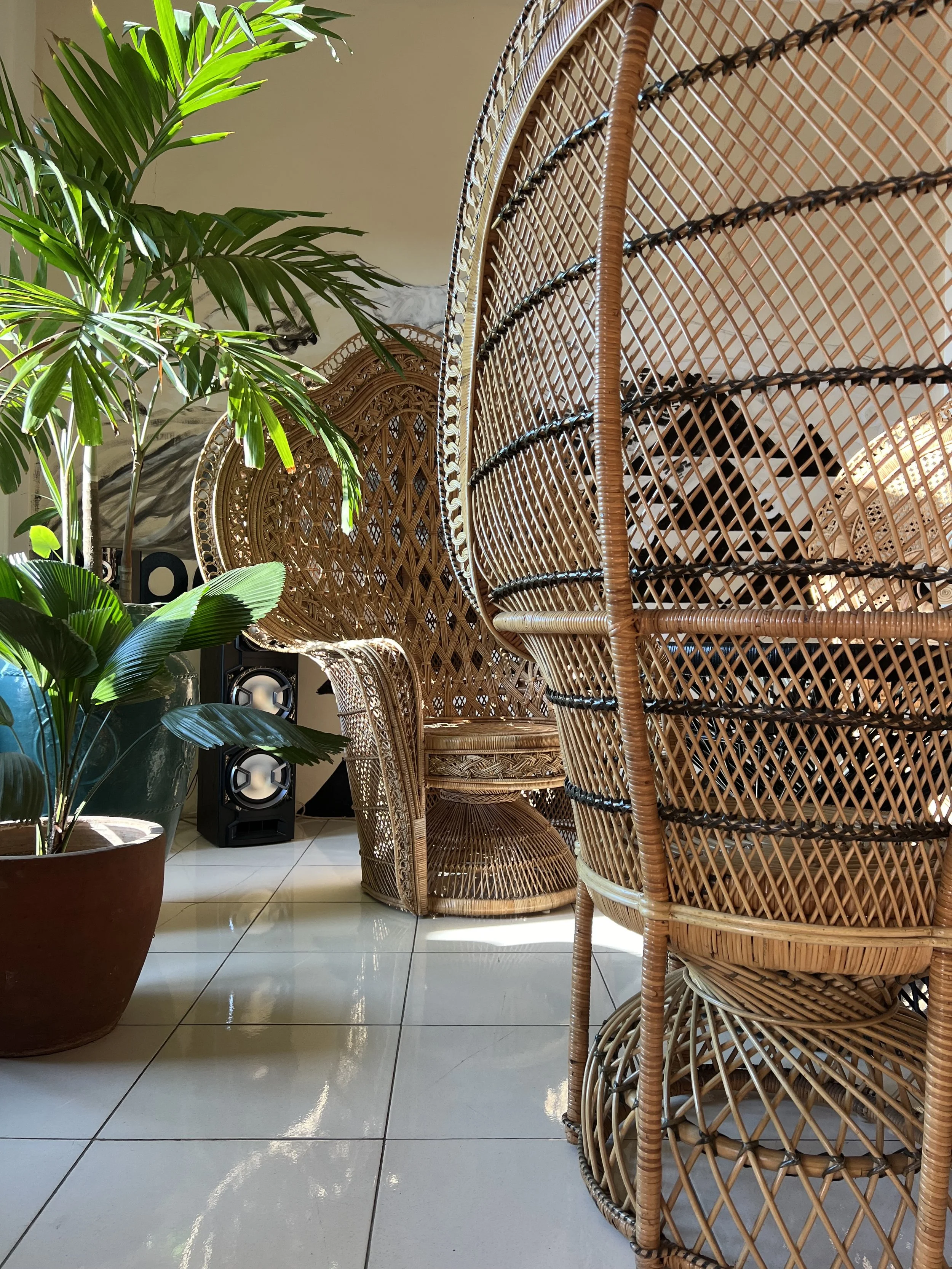Why Do Humans Want Things to Last Forever? Lessons from the Four Little Pigs and Organic Furniture
Humans have an enduring obsession with permanence. We crave objects that won’t fade, break, or change—things that last forever. This mindset has led to the proliferation of synthetic materials like plastic, which promise longevity but come at a significant cost. But what if this obsession is misguided? What if we’ve lost sight of the beauty and value of impermanence, especially when it comes to the way we design our homes and live our lives?
The classic story of The Three Little Pigs offers an allegory that seems straightforward: the house of brick triumphs over the impermanence of straw and sticks. But let’s take it a step further by introducing a fourth pig. This pig builds their house out of plastic—a modern twist that reflects the convenience-driven, synthetic solutions of our time. Together, the four pigs challenge us to rethink our relationship with permanence, especially in the context of organic materials like rattan furniture and the iconic peacock chair.
The Straw, the Sticks, the Brick, and the Plastic
The first two pigs, with their homes of straw and sticks, represent freedom and adaptability. Their homes are rooted in nature, lightweight, and easy to rebuild. They symbolize a life connected to the earth, one that embraces impermanence as a natural part of existence. These homes might not withstand the Big Bad Wolf, but they offer a sense of movement, creativity, and alignment with the rhythms of nature.
The third pig, with their house of brick, represents the pursuit of security and permanence. The brick house is solid, immovable, and resilient against external forces. However, it also introduces rigidity and isolation, creating a static existence that leaves little room for growth or adaptability.
Then comes the fourth pig. They build their house out of plastic, a material born of modern convenience and technological advancement. The plastic house is lightweight and durable, much like the straw and sticks, but unlike organic materials, it doesn’t decompose. It lingers indefinitely, contributing to environmental damage and disconnection from nature. The fourth pig symbolizes our current reality: a world enamored with synthetic permanence but blind to its long-term consequences.
Rattan and the Beauty of Impermanence
Organic furniture, like rattan chairs, challenges the narrative of the third and fourth pigs. It offers a middle ground—durable enough to be functional yet impermanent enough to return to the earth. Rattan vines, for instance, grow quickly and regenerate even after being cut. A peacock chair, with its intricate weaving and natural material, tells a story of craftsmanship and connection to the environment. Unlike plastic, which stagnates and pollutes, rattan furniture evolves with its surroundings, aging gracefully and eventually biodegrading.
Choosing organic materials like rattan is an act of rebellion against the plastic house of the fourth pig. It’s a reminder that not everything needs to last forever to have value. Impermanence can be beautiful, and it aligns us with the cycles of nature, where growth and decay are part of the same process.
The Illusion of Forever
The plastic house of the fourth pig might seem like the pinnacle of innovation—it’s weather-resistant, cheap, and long-lasting. But this durability comes at a price. Plastics clutter our oceans, suffocate wildlife, and trap us in a cycle of overproduction and waste. The illusion of “forever” blinds us to the harm caused by trying to defy nature’s cycles.
On the other hand, the straw and stick homes remind us of the wisdom of impermanence. These materials are temporary, yes, but they are also renewable, adaptable, and deeply connected to the earth. They offer the freedom to rebuild, reinvent, and move forward without leaving behind a trail of destruction.
The Lesson of the Four Pigs
The story of the four pigs is not about choosing one material over another—it’s about balance. The fourth pig’s house of plastic might seem advanced, but it highlights a deeper truth: the pursuit of permanence can isolate us from nature and burden the planet. The straw and sticks of the first two pigs, and even the brick of the third, invite us to reconsider what we value in the things we build and buy.
Rattan furniture, like the peacock chair, embodies this balance. It’s durable enough to withstand years of use yet gentle enough to decompose and return to the earth when its time is done. It offers an alternative to the rigidity of brick and the environmental harm of plastic, allowing us to live in harmony with nature rather than against it.
Rewriting the Story
What if the Big Bad Wolf isn’t the wind or the rain or even external threats? What if the wolf represents our fear of impermanence itself? We build houses of brick and plastic because we’re afraid to let go, afraid to accept that nothing lasts forever. But in doing so, we trade freedom and connection for security that ultimately isolates us.
The next time you consider a piece of furniture, think about the story it tells. Does it trap you in a plastic house, isolated from the rhythms of nature? Or does it invite you to embrace impermanence, freedom, and sustainability?
Let’s be inspired by the first two pigs and their connection to the earth. Let’s recognize the value of organic materials like rattan, which celebrate the beauty of impermanence. And let’s rethink the narrative of “forever,” choosing instead to live in harmony with the cycles of growth, change, and renewal.
After all, the most beautiful homes—and lives—aren’t the ones built to last forever. They’re the ones that grow, evolve, and eventually return to the earth, leaving behind nothing but their story.

